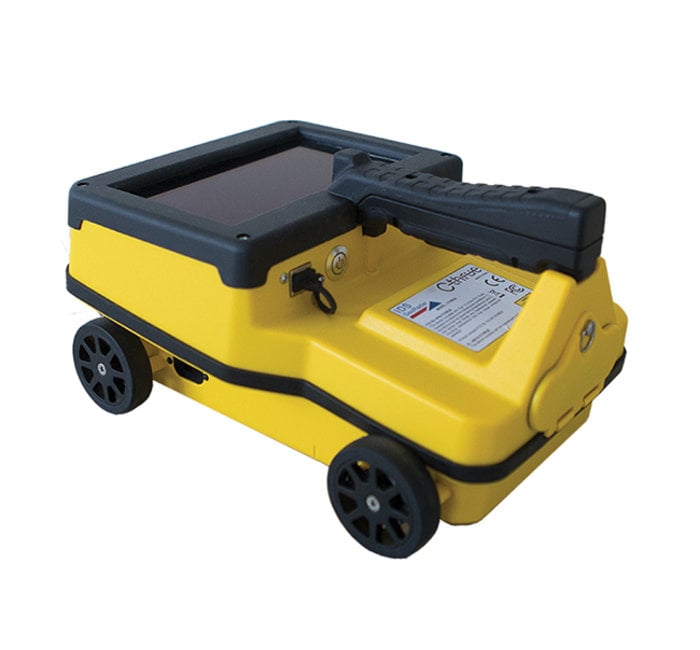Enhancing Task Preparation and Execution With Advanced Concrete Scanning Strategies
In the world of job preparation and execution, precision and insight are important aspects that can make the difference between success and obstacles. Advanced concrete scanning techniques have arised as an advanced device readied to boost the standards of job monitoring within the building sector. By using advanced modern technology, these strategies offer a look right into the architectural honesty of a structure also prior to the very first brick is laid. The ramifications of such advancements are profound, assuring a paradigm change in exactly how projects are approached and supplied.
Benefits of Advanced Concrete Scanning Techniques

Improved Precision in Job Assessments
Enhancing task analyses via innovative concrete scanning methods dramatically improves the precision and integrity of building analyses. By utilizing cutting-edge scanning modern technologies such as ground-penetrating radar (GPR) and 3D imaging, job groups can now acquire detailed understandings right into the problem of concrete structures, recognizing prospective flaws or weak points that may not show up to the nude eye. This enhanced level of accuracy in job evaluations enables building professionals to make even more educated decisions regarding fixing and maintenance approaches, bring about improved total project results.
Additionally, the raised accuracy in job evaluations achieved through sophisticated concrete scanning techniques assists in decreasing the risk of unanticipated problems throughout the construction stage. By proactively identifying covert anomalies within concrete structures, such as rebar corrosion or spaces, project groups can resolve these issues beforehand, avoiding costly delays and rework later in the project lifecycle. Ultimately, the boosted accuracy in task analyses promoted by innovative concrete scanning techniques adds to better efficiency, cost-effectiveness, and quality in construction jobs.
Very Early Recognition of Structural Obstacles
Very early discovery of structural challenges plays a critical role in making sure the integrity and safety and security of concrete structures throughout the building process. Recognizing prospective concerns at a very early stage enables timely intervention, stopping pricey rework, routine delays, and security threats. Advanced concrete scanning strategies, such as ground-penetrating radar (GPR) and 3D imaging, allow job teams to discover covert defects, gaps, reinforcement design disparities, and other abnormalities that might jeopardize the structure's stability.
By implementing these techniques throughout the preparation and execution stages, building and dig this construction experts can proactively resolve structural challenges before they escalate right into major issues. As an example, discovering inadequate concrete cover over support bars beforehand can protect against rust and architectural weakening in the lengthy run - RainierGPR Service Areas. Moreover, identifying variations in concrete density or density can help enhance material use and make sure uniform strength buildings across the framework

Inevitably, very early recognition of structural challenges with sophisticated concrete scanning not only improves the general top quality and sturdiness of the construction however likewise adds to a safer built environment for customers and owners.
Improved Security Steps in Building
The application of durable safety protocols is important in the building industry to reduce threats and secure the wellness of workers and stakeholders. Building and construction sites are inherently dangerous environments, with potential dangers varying from drops and equipment malfunctions to architectural failings. To enhance safety measures, building firms are progressively embracing technical innovations such as wearable devices that monitor employees' important indicators and discover prospective health and wellness problems in real-time. resource In addition, the usage of drones for website security enables for regular security inspections without placing personnel in injury's method. Security training programs have actually additionally progressed to include online truth simulations that supply hands-on experience in handling emergency situation scenarios. Additionally, the integration of synthetic knowledge in security administration systems allows positive recognition of potential threats, enabling prompt interventions. By focusing on safety and security through the unification of sophisticated technologies and extensive training programs, building projects can significantly decrease crashes and produce a secure working setting for all entailed - RainierGPR Service Areas.
Streamlining Task Administration Processes
To maximize operational effectiveness and make certain project success in the building and construction industry, an emphasis on improving job monitoring processes is vital. By executing effective job monitoring processes, construction jobs can reduce hold-ups, decrease prices, and improve overall performance.

Conclusion
To conclude, the utilization of sophisticated concrete scanning methods supplies countless benefits for job preparation and execution. These techniques offer enhanced accuracy in project analyses, very early identification of structural challenges, improved safety actions in building, and structured project administration procedures. Incorporating these methods into project process can inevitably bring about extra successful and effective end results in building jobs.
Inevitably, the improved precision in task analyses promoted by advanced concrete scanning methods adds to higher effectiveness, cost-effectiveness, and quality in building and construction jobs. RainierGPR Service Areas.
To optimize operational effectiveness and ensure job success in the construction sector, a focus on simplifying project monitoring processes is important. By applying efficient project monitoring processes, building jobs can lessen hold-ups, lower costs, and boost total productivity. By streamlining project administration processes with technology integration, clear communication, and data-driven approaches, building and construction projects can achieve greater effectiveness, cost-effectiveness, and successful results.
These methods give enhanced accuracy in job analyses, very early recognition of special info architectural obstacles, improved safety steps in building, and streamlined job administration processes.